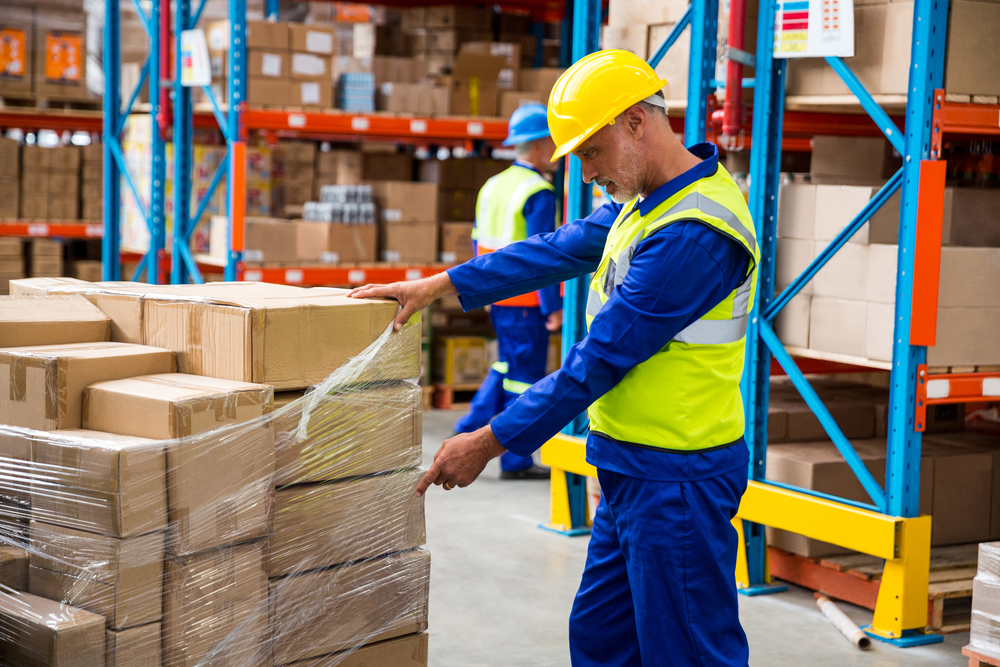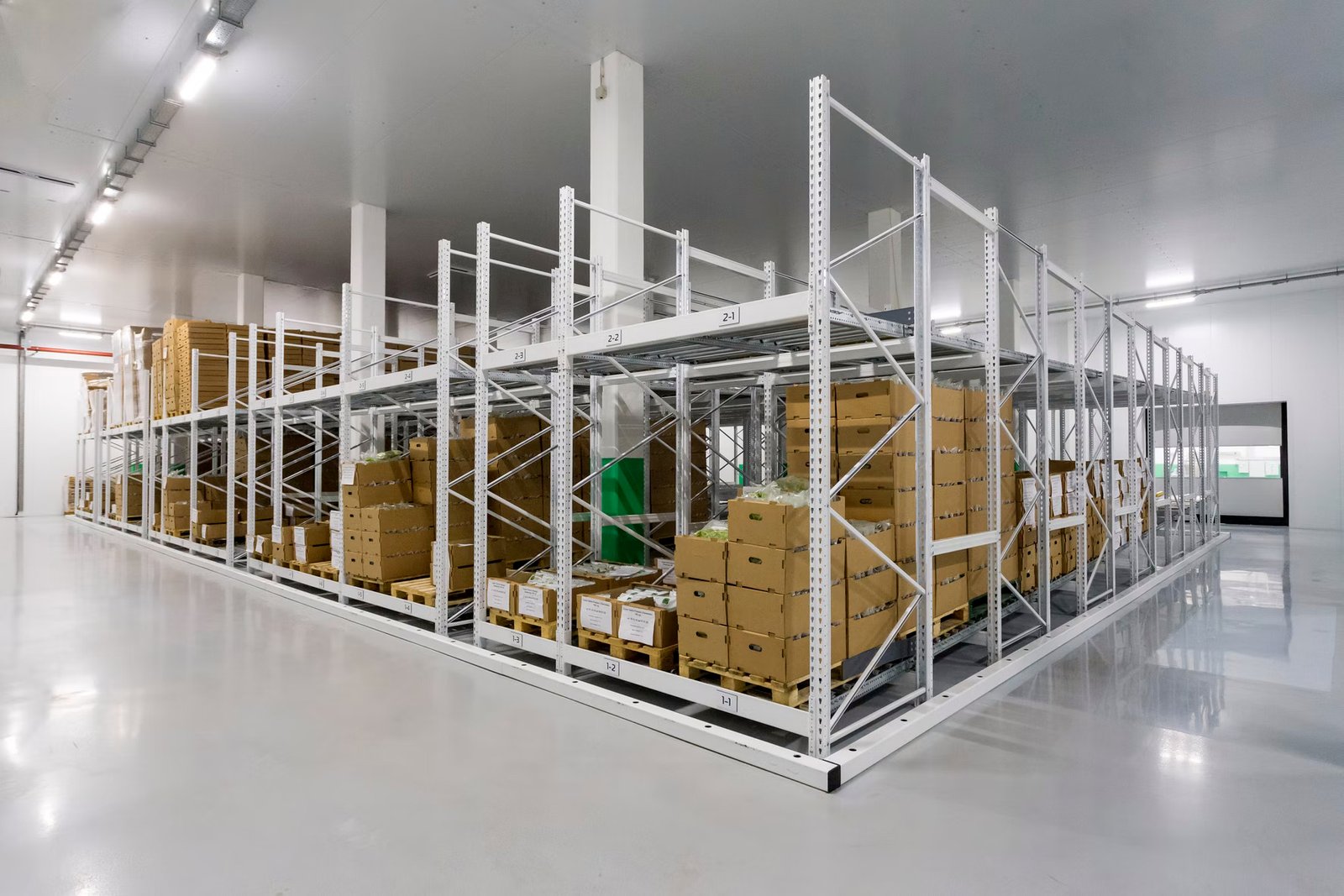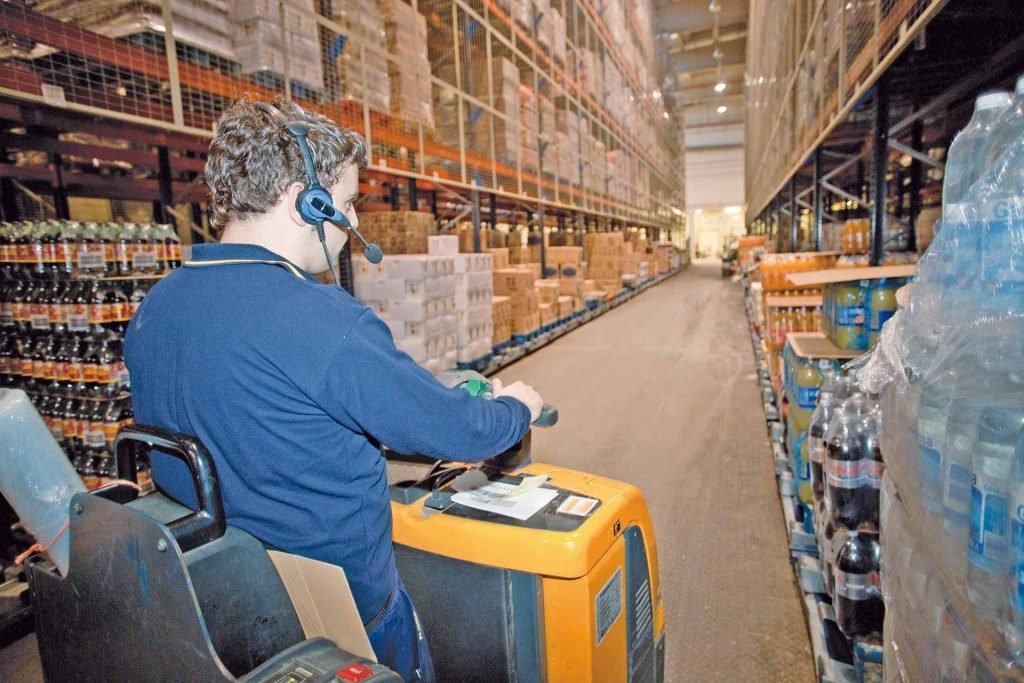Receiving
Receiving is the first warehouse process, which includes receiving goods, checking product specifications and conditions; it is necessary to receive on time as agreed with the supplier because for some goods having special preservation, receiving soon or late will seriously affect the quality. This is the stage of transferring responsibility from delivery to warehouse, so it requires meticulousness and accuracy to filter out poor quality products, helping firms limit damage in the future.
To optimize, managers have to establish receiving requirements for suppliers about label packaging information, type of cargo (palletized or loose), number of packages per pallet, etc. In order not to waste time loading goods at each receiving point, the carrier must organize cargo in relation to the delivery route and the warehouse manager needs to create working hours via schedule software to allocate effectively human resources.

When receiving the goods, the tasks are checking the seal, cargo information and reservation reference before loading. For the loading process, it is recommended to use physical support tools such as power pallet trucks, forklifts, conveyors and parcel dimensioning systems to dramatically reduce safety hazards and processing time. One of the most time-consuming and labor-intensive tasks of the receiving stage is counting and verifying damaged cargo. The use of warehouse technology such as barcode scanners, RFIDs or WMS is essential to speed up counting and reduce errors. Despite the high cost, technology solution is a long-term and worthy investment that quickly improves productivity and increases profits.
Put away
Put-away is the second stage with the task of moving goods from dock to the most optimal warehouse storage location and also one of three most inefficient warehouse processes (H=45%). However, if the stage updates, goods will be stored in optimal locations, travel time decreases, warehouse space is utilized and retrieving goods also becomes easier.

Mr.Henol recommended the firm managers use an integrated digital weighing scale and pallet dimensioning system to collect data and analyze the cargo. RFID is also useful to deliver real-time tracking of capacity and space within the warehouse. Efficient warehouses are usually divided into 2 zones: fixed location for a specific product category, which warehouse clerks can memorize a cargo’s specific location assignment. The rest of the seasonal goods will be stored in a flexible section, this area will have different types of goods at different points in the year.
Storage
Storage is the warehouse process in which goods are placed into their most suitable storage space. To optimize this stage, the manager can use software to calculate the maximum storage capacity and divide by the total warehouse storage area (the ideal result is 22-27%). Additionally, measuring your KPIs in some aspects like carrying cost of inventory, inventory turnover, inventory/sales ratio, etc. can calculate the storage productivity, then select the appropriate aisle system:
- Wide Aisle (WA) >10.5 feet.
- Narrow Aisle (NA) 8.5-10.5 feet, store up to 20% more product than normal.
- Very Narrow Aisle (VNA) <6 feet and enable to store 40%–50% more products than standard aisles. However, you should consider the additional costs that may incur, as this system requires special lift vehicles and even AGVs.
Small and mix-size firms also need to invest in the right warehouse storage system which depends on the size of your facility, product mix, and how you manage your warehouse. The target is to ensure that your space is maximized while improving warehouse efficiency. Here are some of the widely used storage methods in warehouses today: floors/blocks stacking, pallet-flow racking, push-back racking or mezzanine flooring. Storing unpacked items inside containers is a good way to maximize space, but there is a common mistake named “one size fits all” when choosing containers. To achieve an efficient storage process, containers should be made available in various sizes. Storing small items in smaller bins while keeping larger items in bigger containers will increase your storage capacity.

Picking
Picking is the warehouse process that collects products in a warehouse to fulfill customer orders. Since it is the costliest process in the warehouse, comprising as much as 55% of the total operating expense, optimizing this process will allow you to reduce costs significantly and increase your warehouse efficiency.
An ABC Analysis allows a warehouse manager to classify cargo into three categories (ABC) based on order volume. The idea here is to organize inventory such that the highest volume inventory (A) is stored toward the front of the warehouse, while the lowest volume inventory (C) is moved to the back. The result is less walking time and fewer man-hours required to complete picking operations. In addition, when it comes to picking, a warehouse manager also needs to consider which picking methodology to adopt. The 4 main types of picking are picker-to-order, cluster picking, zone picking and wave picking. The goal here is to apply one picking methodology or a combination of methodologies so as to reduce travel time between pick locations.

Packing
Packing is the warehouse process that consolidates picked items in a sales order and prepares them for shipment to the customer. One of the primary tasks of packing is to ensure that damages are minimized from the time items leave the warehouse. Additionally, packaging must be light enough so as not to increase the weight of the goods and minimal enough to control packaging costs.
The packaging was initially intended to provide protection for the item as it is being handled in the warehouse or when the item is being shipped. For businesses, the packaging on an item should be sufficient to limit any damage to the item as it is moved in the warehouse. There are 2 types of packaging: Firstly, internal packaging is developed usually to appeal to the consumer and has all the information required by law. Secondly, external packaging must be able to protect the internal packaging and have enough information to identify the contents, in text and often with barcodes for use with RF technology in the warehouse. The external packaging is usually made of paperboard, aluminium, plastic or cartons because they are lightweight and easy to recycle. The warehouse manager can use cartoning machines, and packaging robots to improve capacity. Packing and labelling should be done simultaneously, mobile printers should be available to insert invoices and bills of lading.

During storage, the packaging must ensure that the product is protected from external damage such as temperature and humidity, dirt, and static electricity (for electronic items). Once all product data is in place, use packaging wizard software (which automatically determines the type of product and corresponding packaging material) to keep products safe and minimize costs.
Shipping
Shipping is the final warehouse process and the start of the journey of goods from the warehouse to the customer. Shipping is considered successful only if the right order is sorted and loaded, is dispatched to the right customer, travels through the right transit mode, and is delivered safely and on time. All previous stages are also vital to the success of shipping because they greatly affect whether the order is fulfilled safely and accurately.
To optimize the shipping process, having software systems to streamline many of the tasks is critical. Labor management systems let you allocate the right amount of resources to prevent over or under allocation. Having a shipping mobile application and device lets you have the right information on hand and in real-time to verify shipments on the fly. And loading systems can let you have guides that clearly instruct how to load cargo safely and efficiently. In addition, creating an online portal is an effective method to help customers and suppliers directly exchange information, avoiding many cumbersome intermediaries. Packagings are recommended: foam pallets, airbags, bubble wrap, shredded paper, polystyrene.
Trang Hoang













